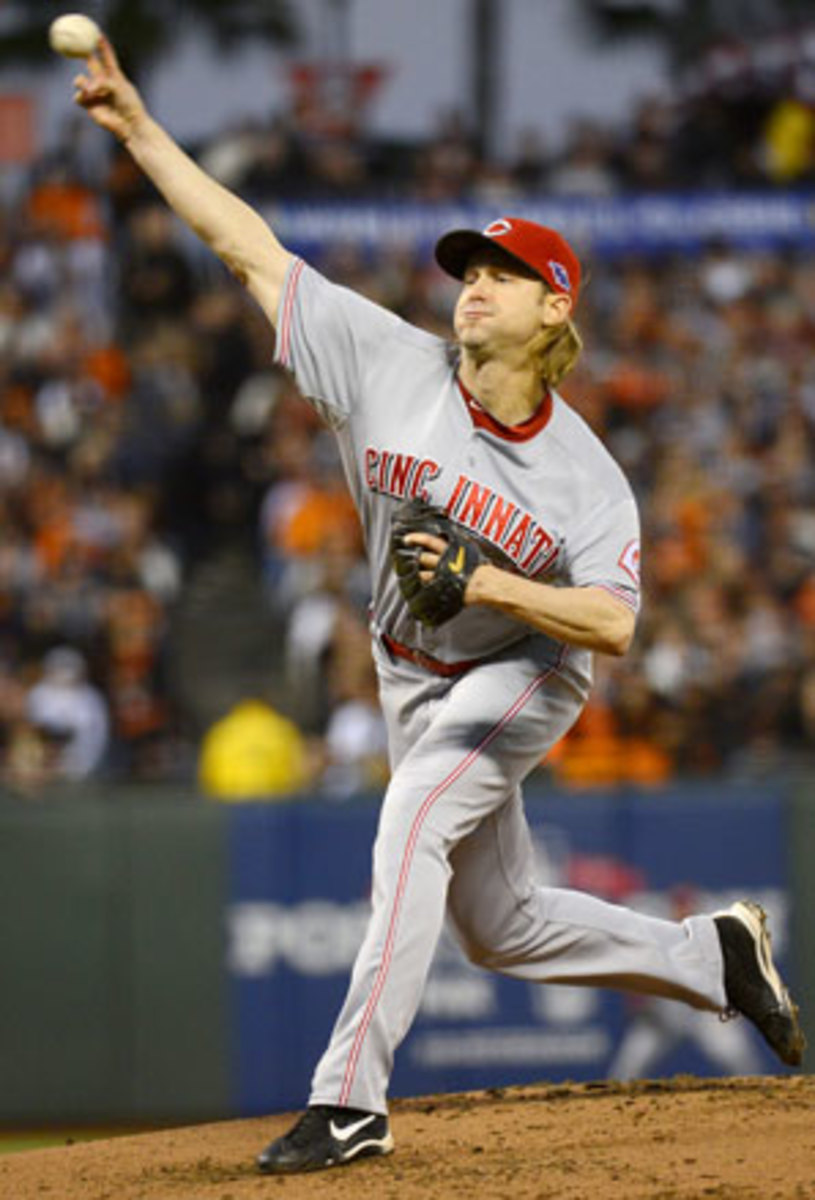Reds back in playoffs, giving long-suffering Cincinnati great pride
Unless you live there, you don't often read about Cincinnati, and not just because the rest of America can't spell it, though that has always been an issue for the city, which gets written as Cincinnatti or Cinncinati or Cinncinnati when it gets written at all.
Cincinnati's most famous export, the Cincinnati Reds, hadn't won a playoff game in 17 years before taking the first two games of the NLDS in San Francisco, where they wore road uniforms whose designers seemed unsure of what to do with all those Ns and Is and Cs, stitching CINC to the left of the buttons, then piling INNATI to the right, a five-car pileup of letters crashing headlong into the lamppost of that final I.
Where to divide the city's name was never an issue when Cincinnati last ruled baseball. Then, members of the Big Red Machine were resplendent in buttonless V-neck polyester pullovers, CINCINNATI arcing unbroken across their chests like a crimson sunrise.
And yet as hard as CINCINNATI could be on tongue or pen or seamstress needle, it has always been even more difficult on the ear. Oliver Wendell Holmes wrote:
Chicago sounds rough to the makers of verseOne comfort we have -- Cincinnati sounds worse.
The Reds have always provided the city with its music, their names like some civic incantation: Votto and Cueto and Cairo, Soto and Sabo and Rijo.
These 2012 Reds of Votto, Cueto, et al. still lead the Giants 2-1 in their best-of-five series after Tuesday night's loss, and they may yet win the club's first World Series since 1990, when Sabo, Rijo and company swept the A's. The intervening 22-year drought is but a batted eyelash in most cities, but not in Cincinnati, where professional baseball was born in 1869 and more or less perfected a century later by the Big Red Machine of -- sing it with me -- Bench, Perez, Morgan, Rose, Concepcion, Foster, Geronimo and Griffey.
It is difficult to overstate the baseball-centric nature of Cincinnati, which once revolved around a horsehide star with 108 stitches. My late mother grew up in Cincinnati: Her father, Jim Boyle, played catcher for the Giants, her uncle Buzz Boyle played for the Brooklyn Dodgers, their two uncles played in the big leagues in the 1890s -- Eddie Boyle for Connie Mack's Pirates, Jack Boyle for the Reds, Browns, Giants and Phillies.
Buzz became a Reds scout who signed another kid from the west side of Cincinnati, Pete Rose. In a math class at the University of Cincinnati, Mom sat next to Sandy Koufax. In the '70s our visits to her hometown -- and what felt like my second hometown -- were a blur of Graeter's ice cream, three-way chili and King Kwik slurpees dispensed into commemorative Reds' cups. In memory, at least, the grownups all drank Hudepohl beer -- or Hudy Delight -- and the kids all rode the Racer, the state-of-the-art, twin-tracked roller coaster at King's Island.
But the cushioned cork center of the city was Riverfront Stadium, circular and astroturfed, where low-stirruped men in polished black shoes and polyester pajama pants that snapped in the front played baseball better than it had ever been played before or since.
Pete Rose wore Aqua Velva, Johnny Bench had his own restaurant, Joe Morgan flapped that one wing like a wounded chicken. Announcer Marty Brennaman released an LP -- "And This One Belongs to the Reds" -- that I played over and over. And yet in all the groovy glory of that team, the twin stilettos of George Foster's sideburns remained the greatest allowable expression of facial hair.
It's instructive that Mr. Redlegs, the Reds' redoubtable mascot with the baseball head, wears a magnificent handlebar mustache on the sleeves of the current team, while the Big Red Machine's mascot, Mr. Red, had a clean-shaven baseball countenance. Only in Cincinnati would such facial hair-splitting be extended to mythological creatures with human bodies and Rawlings noggins.
In between those two teams came the Reds of 1990, those Reds of Marge Schott and Eric Davis and the Rec-Specked Chris Sabo, a group that now seems so distant that their theme song -- blaring in the clubhouse after every win -- was MC Hammer's "U Can't Touch This."
One Sunday morning that summer, while reporting a feature on the wire-to-wire Reds, I drove pitcher Jack Armstrong into Riverfront Stadium in my rental car: Armstrong was late, and the guard waved us into the tunnel, toward the clubhouse door, from which skipper Lou Piniella unexpectedly emerged, scratching himself in his undershirt. Armstrong ducked below the dashboard, and I dropped him around the bend of the tunnel, like a parent dropping an embarrassed teen a block from the movie theater.
In fact, Armstrong was a year older than me, though both of us were little more than kids, which is probably why I find myself rooting for the Reds right now. They keep coming back in 20-year cycles -- 1970s, 1990s and now the 20-teens -- just like nostalgia, a word whose literal meaning is "a severe longing for home."






